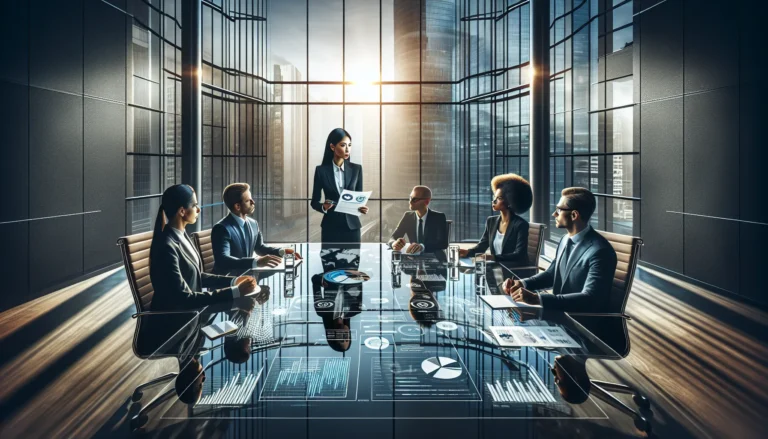In a world where everything seems to be covered in layers of uncertainty, transparent resin printing shines like a beacon of clarity. Imagine crafting stunning, see-through creations that not only turn heads but also spark conversations. Whether it’s for prototypes, artistic endeavors, or just plain fun, this innovative printing technique takes creativity to a whole new level.
Table of Contents
ToggleOverview of Transparent Resin Printing
Transparent resin printing offers unique advantages that cater to various creative and industrial applications. This technique produces pieces that possess exceptional clarity, allowing light to pass through, which enhances visual appeal. Used in prototyping, artists benefit from transparent resin’s ability to create detailed models with intricate designs. Clarity is crucial, especially in applications such as medical devices, where transparent components enable better functionality and aesthetic evaluation.
The printing process itself relies on photopolymerization, where liquid resin solidifies under UV light exposure. This method allows for precise layering and high-definition prints, an essential aspect that many industries prioritize. Moreover, advancements in resin formulations contribute to improved durability and reduced brittleness, essential for functional prototypes and final products.
Engineers and designers increasingly rely on transparent resin for innovative projects. Applications often include architectural models, jewelry, and artistic sculptures, showcasing the medium’s flexibility. Prints made from transparent resin can serve multiple purposes, from demonstration pieces to functional items, highlighting versatility.
Quality finishes are achievable with transparent resin, as post-processing techniques, such as polishing or coating, enhance transparency and provide a glossy finish. Such options expand creative possibilities significantly. Overall, transparent resin printing emerges as a leading choice for those seeking to bring detailed and clear designs to life across various sectors.
Advantages of Transparent Resin Printing
Transparent resin printing offers remarkable benefits, particularly in clarity and versatility. This technique stands out in many creative and professional applications.
High Clarity and Detail
Production of high-detail models occurs with transparent resin printing. Clarity in finished pieces enhances the visual appeal and accuracy essential for presentations. It makes these prints especially valuable in medical devices, where precision and aesthetics must coexist. Engineers appreciate the high-definition results, which enable intricate designs to shine through. Transparency allows light to pass, making it easier to showcase internal features, further elevating the model’s functionality. Such clarity ensures that every detail is visible, showcasing the print’s sophistication in display and functionality.
Versatility in Applications
Transparent resin printing serves various applications across multiple industries. From prototypes to artistic projects, its flexibility accommodates diverse creative needs. Designers embrace this technology for architectural models, jewelry, and unique artistic constructs. In prototyping, the ability to visualize a product’s structure significantly aids feedback and functionality assessment. Various sectors, including engineering and medicine, benefit from the customization possibilities this printing method offers. Such versatility ensures that professionals can explore innovative solutions tailored to specific project requirements.
Comparison with Other Printing Methods
Transparent resin printing showcases distinct advantages compared to other printing methods like Fused Deposition Modeling (FDM) and traditional opaque resins.
FDM vs. Resin Printing
FDM produces parts by extruding melted filament, often resulting in visible layer lines. In contrast, resin printing achieves smooth surfaces with brilliant clarity, essential for detailed projects. While FDM is well-suited for large, functional prototypes, resin printing excels in creating intricate designs and transparent features. Speed can vary; FDM offers faster print times for larger objects, yet resin printing delivers superior detail in shorter layers. Both methods have their place in prototyping, but transparent resin offers exceptional aesthetic quality.
Benefits of Transparent Resin Over Opaque Resins
Transparent resin provides unique advantages over opaque resins, particularly in clarity and functionality. Light transmission allows users to visualize internal geometries, enhancing the overall design. Customization options also expand significantly; transparent resin facilitates artistic expression by showcasing colorful inclusions and effects. Durability often matches or exceeds that of opaque resins, ensuring longer-lasting creations. Furthermore, smooth finishes with transparent resin can require less post-processing, streamlining project completion. The versatility of transparent resin opens doors to a range of applications, from medical devices to elegant jewelry designs.
Best Practices for Successful Transparent Resin Printing
Achieving quality results in transparent resin printing requires careful attention to detail. Follow these best practices to ensure success in your projects.
Printer Settings and Calibration
Optimal printer settings and calibration significantly influence the quality of transparent resin prints. Adjust exposure times based on the specific resin being used, as different materials cure at varying rates. A lower layer height often results in smoother surfaces, enhancing clarity in the finished piece. Use proper support structures to prevent print failures, especially for intricate designs. Regular calibration of the print bed ensures accurate layer adhesion, improving dimensional accuracy in models. Monitoring the ambient temperature and humidity helps maintain ideal printing conditions, preventing issues during the curing process.
Post-Processing Techniques
Post-processing plays a crucial role in achieving the desired clarity and finish in transparent resin prints. Start by washing models in isopropyl alcohol to remove excess resin, which improves transparency. Curing under UV light solidifies the print and enhances durability, allowing models to withstand handling. Sanding the surface with fine-grit sandpaper can refine clarity further but requires careful technique to avoid scratches. Applying a clear coat or polishing compound brings out the shine and depth of the resin, enhancing the visual appeal. Each method contributes to the final look, highlighting the intricate details of the design while maintaining the model’s functionality.
Common Challenges and Solutions
Transparent resin printing presents unique challenges that require effective solutions. One significant issue involves curing time. Extended curing can lead to overexposure, resulting in damaged prints. Adjusting the exposure time based on the resin type offers a practical solution.
Print adhesion often poses another challenge for users. Poor adhesion can lead to prints detaching from the build platform. Utilizing proper support structures and ensuring a level print bed enhance adhesion and stability during the printing process.
Quality control remains critical, with clarity sometimes affected by impurities. Dust and contaminants on the print surface can mar the finished piece. Implementing a clean workspace and regularly inspecting resins before use helps maintain high clarity in prints.
Handling is another area requiring attention. Uncured resin is hazardous and requires careful handling. Using protective gear and properly storing resin minimizes risks associated with skin contact and toxicity.
Inconsistent layering can also occur, complicating the final results. This often results from incorrect printer calibrations. Regular calibration of the printing equipment ensures optimal performance and consistency in layer adhesion.
Post-processing techniques introduce their own challenges. Proper washing and curing processes must be followed to ensure the model’s strength and clarity. Establishing a consistent procedure for washing in isopropyl alcohol and thorough UV curing leads to enhanced durability and visual appeal.
These challenges are vital to address for successful transparent resin printing. Each step contributes to realizing the full potential of transparency, detail, and functionality in the final printed models.
Conclusion
Transparent resin printing stands out as a groundbreaking technique that empowers creators across various fields. Its ability to produce highly detailed and visually striking models makes it indispensable for applications ranging from medical devices to artistic projects. The clarity and precision offered by this method not only enhance aesthetic appeal but also improve functionality.
By embracing best practices and addressing common challenges, users can unlock the full potential of transparent resin printing. As technology continues to evolve, the possibilities for innovation in design and prototyping will only expand, solidifying transparent resin printing’s place as a vital tool in modern creativity.




